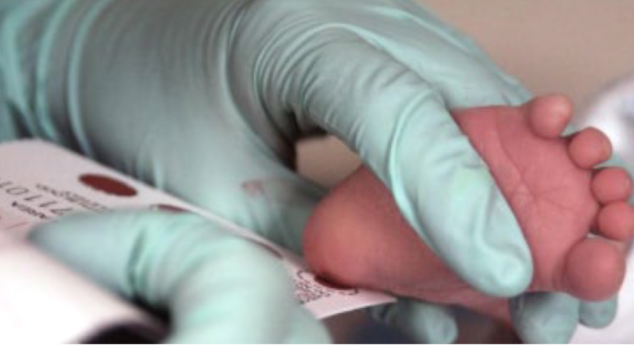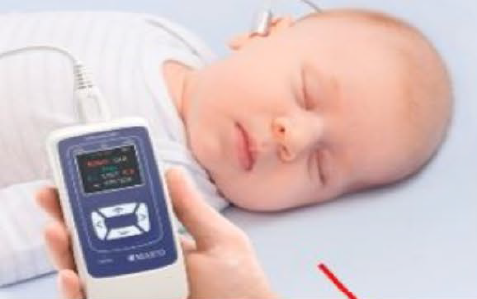Screening Basics
Each baby born in Indiana will have three (3) screens performed before the baby goes home from the hospital. Indiana allows parents to refuse one, two, or all three parts of newborn screening due to religious beliefs only. Any family who refuses screening for their baby must fill out and sign State Form 54102 or the Spanish version State Form 57106.
Heel Stick / Bloodspot Screening
Heel Stick / Bloodspot Screening - A heel stick screening is a quick and simple method of obtaining a sample of a newborn's blood. This blood, called the bloodspots, is sent to the newborn screening laboratory where it is then analyzed for over 50 rare, life-threatening genetic conditions.
Critical Congenital Heart Disease (CCHD) Screening
CCHD screening is a quick, non-invasive, and gentle test that measures how much oxygen a baby has in their blood and how healthy a baby’s heart & lungs are.
Babies who have low oxygen levels, less than 95%, may need to be evaluated for CCHD, sepsis, respiratory problems, or other conditions detrimental to the baby's health.
CCHD is a broad term that refers to several different heart defects. Seven different CCHDs can be detected by pulse oximetry screening. All of these heart defects require treatment, often involving surgery, to correct them soon after birth. If a baby has CCHD and does not receive treatment shortly after birth, the baby has a higher chance of developing serious health outcomes, including death. Most babies who pass the pulse oximetry screen will not have CCHD.
Hearing Screening
Hearing Screening - All babies receive a hearing screen to identify possible hearing loss. This is called the Universal Newborn Hearing Screening (UNHS).
By including hearing screening in Indiana’s newborn screen, infants with hearing loss can be identified before 3 months of age and obtain early intervention services by 6 months of age. The hearing screening portion of newborn screening is managed and followed up by the Early Hearing Detection and Intervention (EHDI) program.
